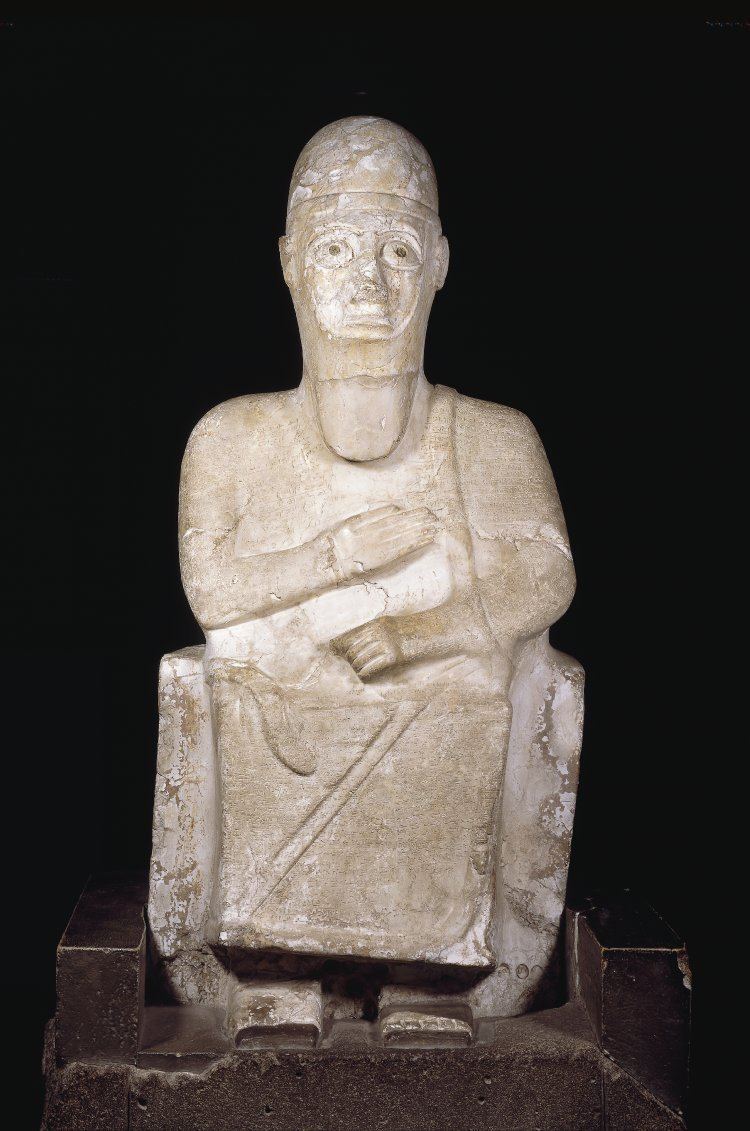 | ||
Name Idrimi Idrimi Children Niqmepa, King of Alalakh, Addu-nirari | ||
Idrimi alalakh
Idrimi was the king of Alalakh in the 15th century BC (c. 1460–1400 BC). He was a Hurrianised son of Ilim-Ilimma I the king of Halab, now Aleppo, who had possibly been deposed by the new regional master, Barattarna or Parshatatar, king of the Mitanni. Nevertheless, he succeeded in gaining the throne of Alalakh with the assistance of a group known as the Habiru. Idrimi founded the kingdom of Mukish and ruled from Alalakh as a vassal to the Mitanni state. He also invaded the Hittite territories to the north, resulting in a treaty with the country Kizzuwatna. Idrimi is known from an inscription on a statue found at Alalakh by Leonard Woolley in the 1930s and 1940s, revealing new insights about the history of Syria in the mid-second millennium.
Contents
- Idrimi alalakh
- Idrimi statue
- Early life of Idrimi
- The decision to take back Alalakh
- The rule of Idrimi in Alalakh
- Debate on Sharruwa the scribe and his blessing of the statue
- Idrimis rule in tablet 1 The royal seal of Idrimi
- Idrimis rule in tablet 2 Idrimis treaty to Pilliya of Kizzuwatna
- Idrimi as a comparative character to Biblical characters
- References
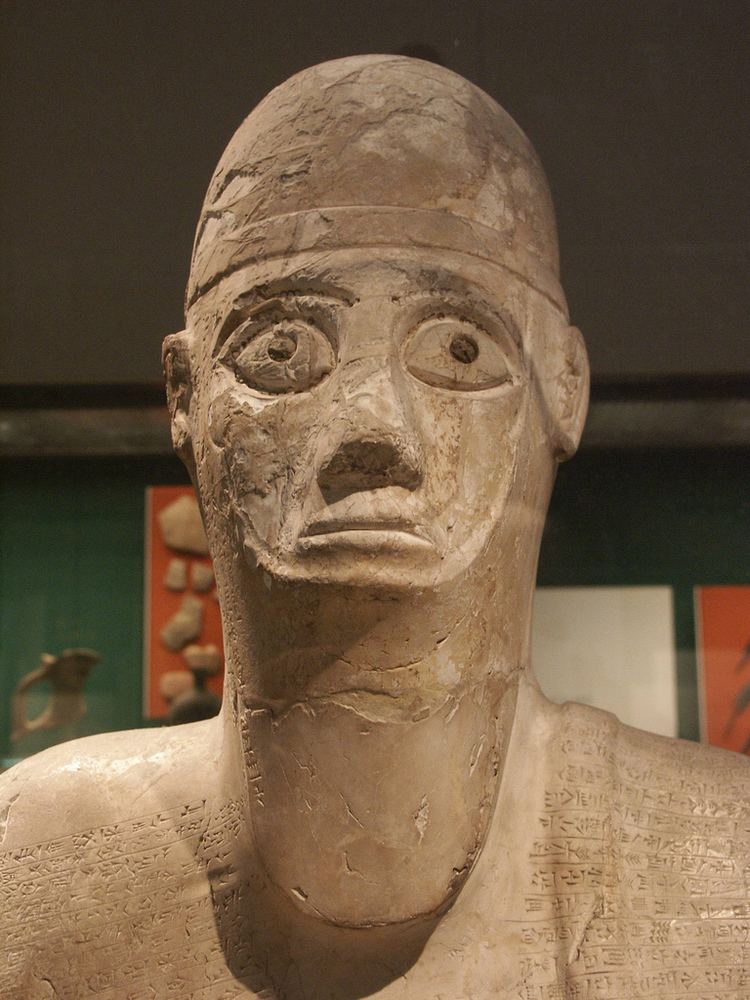
Idrimi statue
Early life of Idrimi

In the first part of Idrimi's autobiography on his statue, it is claimed that an incident had occurred in Halab and that he and his family had to flee as a result. Jack M. Sasson of the University of North Carolina speculated that Idrimi didn't claim any relationship to Halab's rulers. He argued that Ilim-Ilimma I, Idrimi's father, was either dethroned or had unsuccessfully attempted to usurp the throne of Halab from an unknown king. Idrimi goes to Emar because of his maternal ancestral connections to the Lords of Emar. While living in Emar, he considered himself as a slave.
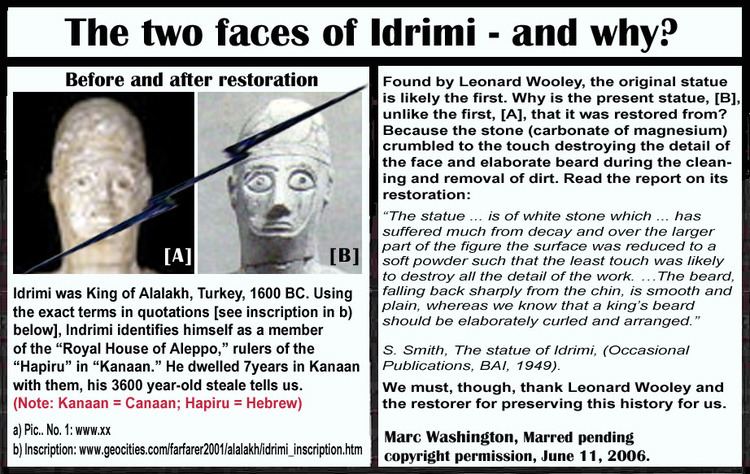
According to Tremper Longman, lines 8b-9 of the autobiography indicate that Idrimi may have considered retaking his father's lost throne, and that he tried to involve his brothers in his cause. As his brothers declined to participate, Idrimi went to Alalakh alone but then fled to Ammiya in the land of Canaan. According to Marc Van de Mieroop, Idrimi was unhappy at Emar for being an "underling".

There is no scholarly debate that is adequate enough to explain why Idrimi chose to live among the Habir in Canaan, though it is psychologically clear that Idrimi got along well with the other refugees. It was because they went through a similar experience of being uprooted from their own hometowns. Another possibility by looking at Tremper Longman's theory is that Idrimi was recruiting potential allies in a greater effort to take Alalakh. But, it is clear from these various scholarly speculations that a political motivation may be involved in Idrimi's desire to take back Alalakh. This motive is further indicated by author Garrett Galvin who compared Idrimi's story to the famous Egyptian work, the Story of Sinuhe. Idrimi was similar to Sinuhe in the sense that he was a high-class refugee looking back to his roots and finding an opportunity to take back his throne while being fueled by humiliation and anger towards his political enemies. Galvin also argued that Idrimi's attitude of being from a higher social class overcame the hardships he had as a refugee.
The decision to take back Alalakh

After seven years living among the Habiru in Canaan c. 1497 BC, seeking an opportunity to take back his throne, Idrimi found his chance. Edward Greenstein and David Marcus' translation of the inscription on lines 29–34 revealed that following the storm-god Teshub's advice in a dream, Idrimi "made ships and had auxiliary troops board them and proceeded via the sea to Mukishe (Mukish). Now, when my country heard of me, they brought me large cattle and small cattle, and in one day, in unison, the countries of Ni'i (Niya)..., Mukishe (Mukish), and my own city Alalah (Alalakh) became reconciled with me...they concluded a treaty and established them truly as my allies.". This newfound alliance with local rulers, created by cattle exchanges, was just the beginning of the gradual restoration of Idrimi's royal status as the king of Alalakh.
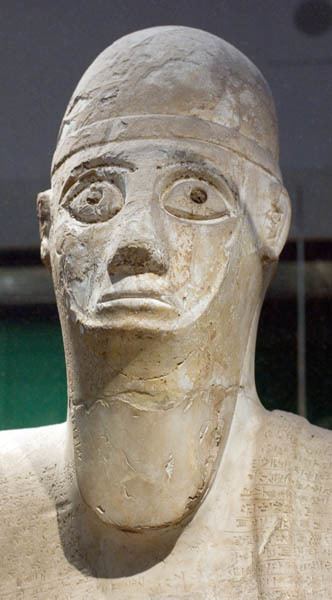
Edward Greenstein's and David Marcus's translation of the inscription on lines 42-51 revealed that despite Parratarna's hostility to Idrimi while he was in exile in Canaan, he actually respected Idrimi's coalition, maybe submitting to Idrimi out of fear that his social outcast army could overthrow him. Idrimi said that King Parshatatar for "seven years...was hostile to me. I sent Anwanda to Parrattarna, the mighty king, the king of the Hurrian warriors, and told him of the treaties of my ancestors...and that our actions were pleasing to the former kings of the Hurrian warriors for they had made a binding agreement. The mighty king heard of the treaties of our predecessors and the agreement made between them and...read to him the words of the treaty in detail. So on account of our treaty terms he received my tribute...I...restored to him a lost estate. I swore to him a binding oath as a loyal vassal.". Here, possibly influenced by the nature of Hittite oaths, Idrimi swore loyalty to Parshatatar after seven years despite him overthrowing his father on the throne in Aleppo. He made his request to the throne peacefully by restoring Barattarna's estate and swore him an ultimate Hurrian loyalty oath, which was the first step to Idrimi regaining his power again.
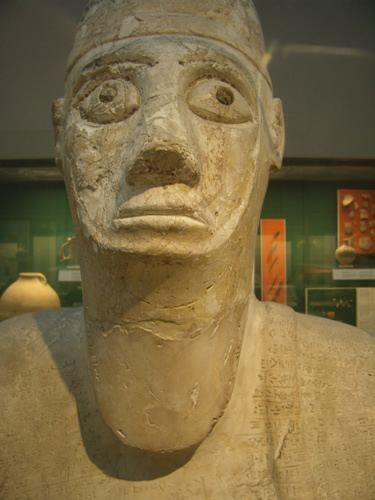
The inscription in lines 42-51 of Greenstein and Marcus's translation described Idrimi's capture of Alalakh as a peaceful effort to appease Parrattarna with tributes of restoring his estate and swearing a loyalty oath unto him rather than using warfare to capture the city. Marc Van de Mieroop mentioned that Idrimi "captured" Alalakh implying a warfare approach that the inscription doesn't give. Author Paul Collins described Idrimi's maneuver as a "greeting-present, the traditional form of establishing and maintaining friendly relations between rulers, even those of different rank, and reminded him (Parrattarna) of earlier oaths sworn between the kings of Halab (Aleppo) and the kings of Mitanni." Also, Collins mentioned that Parratarna had accepted Idrimi's tribute to him as a loyal vassal ruler. He only allowed Idrimi limited independence of making his own military and diplomatic decisions just as long as it didn't interfere with Mitanni's overall policy. This further allowed Idrimi to set his sights on his diplomatic and military aims in Kizzuwatna and act as an independent ruler. Idrimi's "capture" of Alalakh was evidenced in his statue inscription and Collins' analysis as a peaceful movement rather than a military movement.
The rule of Idrimi in Alalakh
After Idrimi's success in establishing a peaceful agreement with King Barattarna of Mitanni sometime around 1490 BC, most of his actions as king are vaguely written and are limited to only smaller sources. Tablets 1 and 2 at the British Museum are great primary sources about Idrimi's actions during his rule, but it's not enough to just look at those two tablets as a whole description of Idrimi's rule. Strong scholarly consensus argued by ancient Syro-Palestine scholars Dominique Collon and Gary Oller also suggested that Idrimi led cross-border raids into Hittite territory during his rule. According to Collon, he raided Hittite territory and used the booty from that raid to build his massive palace.
Gary Oller, in his 1977 dissertation, further confirmed Collon's statement by reaffirming Idrimi's statement in lines 64-77 of his statue inscription that he raided seven cities somewhere near the city of Gaziantep in modern-day Turkey.
According to Edward Greenstein and David Marcus' translation of Idrimi's statue inscription, "Then I took troops and attacked Hatti-land. As for the seven cities under their protection...these I destroyed. Hatti-land did not assemble and did not march against me, so I did what I wanted. I took captives from them and took their property, valuables, and possessions and distributed them to my auxiliaries, kinsmen, and friends. Together with them I took booty."It is possible that Idrimi may have taken slaves along with other trade goods in his raids on the seven Hittite towns as booty to restore his own power. Gary Oller gave some validity to the existence of the cities sacked in Idrimi's raid by mentioning two of the seven Hatti cities of Hassuwa (Khashshum) and Zaruna in Hattusili I's annals from his reign in c. 1580–1556 BC. The annals mentioned that Hattusili I destroyed Zaruna in his fifth campaign and defeated a coalition of Hassuwa and Halab, cities also mentioned by Idrimi in his statue inscription.
Lines 77-78 from Greenstein's and Marcus's translation of the statue inscription confirmed Collon's argument of what Idrimi did with his booty: "Then I returned to Mukishe (Mukish) and entered my capital Alalah (Alalakh). With the captives, goods, and property, and possessions which I brought down from Hatti, I had a palace built." The inscription from lines 78-86 of that same translation states, "I made my regime like the regime of kings. I made my brothers like royal brothers, my sons like their sons and my relatives their relatives. The inhabitants who were in my land I made to dwell securely, and even those who did not have a dwelling I settled. Then I organized my land, and made my cities like they were before. Just as our ancestors had established regular rites for the gods of Alaklah, and just as our forefathers had performed sacrifices, I constantly performed them. These things I did, and I entrusted them to my son Adad-niari. It is possible according to the statue text that Idrimi would have used his "spoils of war" from the seven Hittite towns, especially any valuable items, to help fund the rebuilding of his cities. It is very likely that, based on his coalition he had when he took over Alalakh as vassal king, Mukish and other cities in the coalition became a part of Alalakh's vassal kingdom. As a "gratefulness" gift for Idrimi, they would offer tribute to him for him to rebuild their cities for them, which is mentioned in the royal seal of Idrimi. It is also possible that he supported the gods of Emar and the cults of the storm-god Teshub if one looks at the brief mentions of those gods in his statue inscriptions during the early phases of his life.
Debate on Sharruwa the scribe and his blessing of the statue
In the final parts of the statue inscription, Idrimi commissioned the scribe Sharruwa to write his statue inscription, invoking major blessings for those who respect his statues and cursings by the gods to anyone who would defile his statue. Jack M. Sasson of the University of North Carolina contended that Sharruwa wrote the inscription for selfish reasons to bolster his national pride. This was indicated by the fact that Idrimi's statue was not found in Level 4 in Woolley's time, but on Level 1B (1250–1200 BC). Dominique Collon refuted his arguments by saying that many of the documents associated with Idrimi in the Level 4 Alalakh palace archives discovered by Woolley were associated with his reign in 1490–1460 BC, therefore giving some validity to Sharruwa's statements.
Idrimi's rule in tablet #1: The royal seal of Idrimi
This tablet or "seal" was one of only two recorded sources of Idrimi from the British Museum. The tablet was Idrimi's royal seal, which contained his accounts of goodwill gifts of silver and other forms of tribute like cattle from Mukish and Zelki and other nearby cities, possibly demonstrating a tribute system among his allied city-states dating back to his alliance with them during his exile. His seal represented his act of piety towards the Shutu people and to those who "had no settled abode," to show his generosity as a king and former Habiru refugee as he rebuilt his cities.
It is clear from the inscriptions on the seal that Idrimi ruled within Level IV in the mid to late Bronze Age with piety and wise administration and that it was subsequently used by his son and successor Niqmepa as his royal seal as a replica of his own royal seal. If Niqmepa used his father's royal seal for his own royal seal, which contained the names of his predecessors, "Abbaban, Sararan, Naraam", it is implied that Idrimi would have those same names on his royal seal, indicating his need for legitimacy from his previous Hurrian rulers, who made oaths to legitimize their claims to the throne according to his statue inscription. Royal seals were frequently used in the Hittite Empire and Hurrian regions in northern Syria to demonstrate the king's power in Idrimi's time. They were made up of a material of glass and silica called failence. The failence was heated at a lower temperature so that the surface could have a glazed appearance, allowing them to be easily carved and cheaply produced. The seal could suggest a possible theory that despite the Hittites being a political rival to Idrimi, he adapted the Hittite-style royal seal along with Hittite-style oaths of loyalty he made to Parshatatar and Pilliya. Oller theorized that Idrimi's predecessors in his royal seal were Halabian rulers of the 16th century BC of an independent Halab (Aleppo) prior to Mitanni's rise to power, though their relationship with Idrimi has yet to be determined by other scholars. Oller also proposed a theory that Idrimi's predecessors ruled Yamhad when Alalakh was a part of Yamhad's territory, though that theory has not been confirmed by other scholars.
Idrimi's rule in tablet #2: Idrimi's treaty to Pilliya of Kizzuwatna
This tablet from several treaty texts revealed that Idrimi had somehow exchanged other slaves or fugitives with Pilliya of Kizzuwatna, which made sense considering that both Idrimi and Pilliya were vassal kings to Barattarna. According to Donald L. Magetti, the treaty was partly influenced by the swearing of oaths in the Hittite Empire, but only within the context of swearing oaths of loyalty with one another as leaders, saying in lines 3-5, they "took an oath by the gods and made this treaty". He argued that lines 40-43 of the treaty required that Barattarna, the Hittite king of Mitanni, approved the treaty before it could be effective and that fugitives or slaves could be exchanged between Idrimi and Pilliya only after the king approved the agreement. The treaty was concluded by Idrimi and Pilliya following Idrimi's raids into Hittite territory. This may somewhat validate line 77 of Greenstein's and Marcus's translation of Idrimi's statue inscription, "Together with them I took (booty)," suggesting that Idrimi led raids into Kizzuwatna and wanted to end them in order to gain Pilliya's favor against bigger enemies like the Hittites as a buffer state. This favor was to be gained by a runaway slave clause within the treaty allowing ordinary citizens to retrieve runaway slaves for rewards of five-hundred copper shekels for a man and one thousand shekels for a woman. A slave owner could also enter into Kizzuwatna and Alalakh to retrieve their runaway slaves for no reward.
Idrimi as a comparative character to Biblical characters
Most scholars agreed that Idrimi is comparative to other biblical characters like Abraham and David, suggesting that the Bible and Idrimi's statue autobiography had similar literary parallels different from standard Mesopotamian or Akkadian literature. Idrimi, according to John Gee of Brigham Young University, is comparative to Abraham in that both of them had to leave their homeland and travel to another land with their family. Abraham left his homeland of Ur and had to travel to another land with his family, but left that land and had to travel again to find a place for his posterity in the land of Canaan. In a similar manner, Idrimi left Aleppo and traveled to Emar with his family only to travel to Canaan to join the Habiru and find a good place for himself and his descendants, which he did at Alalakh.
Also, a famous Assyriologist, A. Leo Oppenheim, also saw similar parallels between Idrimi and King David of Judah. Idrimi stays for seven years among Hapiru warriors. After seven years, the god Addu or Teshub became favorable to him and he starts building ships. The king Barattarna is hostile to him for seven years. In the seventh year Idrimi lanunched negotiations with Barattarna. He also gathered spoils from seven Hittite cities and builds his own palace. David had a similar pattern with the number seven too. He is the youngest of seven sons of Jesse. He stayed seven years in Hebron before conquering a Jebusite fortress outside of Jerusalem and renaming it the "City of David." He also gave his allies the elders of Judah by offering them presents from parts of the spoils he conducted during his raid, while Idrimi raided the seven Hittite towns and gave those spoils to his allies as mentioned in his inscription.
For Edward Greenstein, the story of Idrimi was similar to the biblical stories of Jacob, Joseph, Moses, Jephthah, and Nehemiah. All five biblical figures and Idrimi were exiles at their young life, they went on a journey to learn about divine will, and attributed their successes in watching out for the well-being of their people from the will of a divine source or origin.
